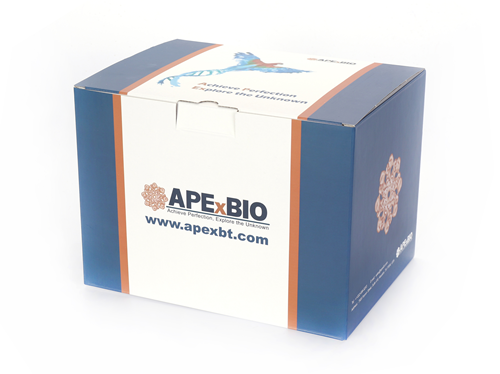Recombinant Human HGF, Tag Free
Hepatocyte Growth Factor (HGF) also known as scatter factor and hepatopoietin A, is a pleiotropic protein in the plasminogen subfamily of S1 peptidases. It is a multidomain molecule that includes an N-terminal PAN/APPLE-like domain, four Kringle domains, and a serine proteinase-like domain that has no detectable protease activity [1-5]. Human HGF is secreted as an inactive 728 amino acid (aa) single chain propeptide. It is cleaved after the fourth Kringle domain by a serine protease to form bioactive disulfide-linked HGF with a 60 kDa alpha and 30 kDa beta chain. Alternate splicing generates human HGF isoforms that lack the proteinase-like domain and different numbers of the Kringle domains. Human HGF shares 91%-94% aa sequence identity with bovine, canine, feline, mouse, and rat HGF. HGF binds heparan-sulfate proteoglycans and the widely expressed receptor tyrosine kinase, HGFR/c-MET[6, 7]. HGF-dependent c-MET activation is implicated in the development of many human cancers [8]. HGF regulates epithelial morphogenesis by inducing cell scattering and branching tubulogenesis [9, 10]. HGF induces the up-regulation of integrin alpha 2 beta 1 in epithelial cells by a selective increase in alpha 2 gene transcription [11]. This integrin serves as a collagen I receptor, and its blockade disrupts epithelial cell branching tubulogenesis [11, 12]. HGF can also alter epithelium morphology by the induction of nectin-1 alpha ectodomain shedding, an adhesion protein component of adherens junctions [13]. In the thyroid, HGF induces the proliferation, motility, and loss of differentiation markers of thyrocytes and inhibits TSH-stimulated iodine uptake [14]. HGF promotes the motility of cardiac stem cells in damaged myocardium [15].
Reference
[1]. Karihaloo, A. et al. (2005) Nephron Exp. Nephrol. 100: e40.
[2]. Hammond, D.E. et al. (2004) Curr. Top. Microbiol. Immunol. 286:21.
[3]. Rosario, M. and W. Birchmeier (2004) Dev. Cell 7:3.
[4]. Lesk, A.M. and W.D. Fordham (1996) J. Mol. Biol. 258:501.
[5]. Nakamura, T. et al. (1989) Nature 342:440.
[6]. Mizuno, K., et al. (1994) J. Biol. Chem. 269:1131.
[7]. Gheradi, E. et al. (2003) Proc. Natl. Acad. Sci. 100:12039.
[8]. Corso, S. et al. (2005) Trends Mol. Med. 11:284.
[9]. Maeshima, A. et al. (2000) Kid. Int. 58:1511.
[10]. Montesano, R. et al. (1991) Cell 67:901.
[11]. Chiu, S-J. et al. (2002) J. Biomed. Sci. 9:261.
[12]. Saelman, E.U.M. et al. (1995) J. Cell Sci. 108:3531.
[13]. Tanaka, Y. et al. (2002) Biochem. Biophys. Res. Commun. 299:472.
[14]. Mineo, R. et al. (1994) Endocrinology 145:4355.
[15]. Urbanek, K. et al. (2005) Circ. Res. 97:663.
|
Accession # |
P14210 |
|
Alternate Names |
DFNB39; EC 3.4.21; EC 3.4.21.7; fibroblast-derived tumor cytotoxic factor; F-TCF; HGF; HGFB; HPTA |
|
Source |
Human embryonic kidney cell, HEK293-derived human HGF protein |
|
Protein sequence |
Gln32-Ser728 |
|
M.Wt |
53.7 kDa (alpha chain) + 26 kDa (beta chain) |
|
Appearance |
Solution protein |
|
Stability & Storage |
Use a manual defrost freezer and avoid repeated freeze-thaw cycles. - 12 months from date of receipt, -20 to -7°C as supplied. |
|
Concentration |
0. 2 mg/mL |
|
Formulation |
Dissolved in sterile PBS buffer. |
|
Reconstitution |
We recommend that this vial be briefly centrifuged prior to opening to bring the contents to the bottom. This solution can be diluted into other aqueous buffers. |
|
Biological Activity |
The EC50 for this effect is 0.05-0.2 ng/mL. Measured by its ability to induce IL-11 secretion by Saos-2 human osteosarcoma cells. |
|
Shipping Condition |
Shipping with dry ice. |
|
Handling |
Centrifuge the vial prior to opening. |
|
Usage |
For Research Use Only! Not to be used in humans. |
Quality Control & DataSheet
- View current batch:
-
Purity > 95%, determined by SDS-PAGE.
- Datasheet
Endotoxin: <0.010 EU per 1 ug of the protein by the LAL method.








